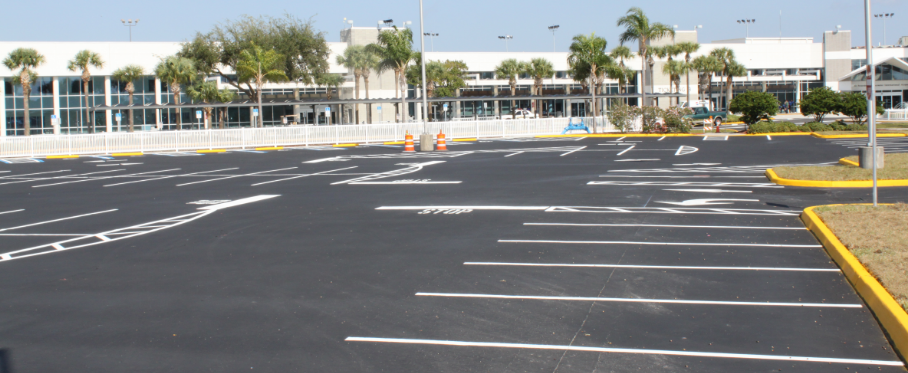
On the surface, designing a parking lot seems like a pretty simple task. Simply lay down some asphalt, draw some lines, and call it good, right? Not so fast. There is a lot more than meets the eye that goes into designing a parking lot, and a project of this kind will only be successful when all of the relevant issues have been taken into consideration.
Stall Size
The first thing to think about during the parking lot striping and design process is the size of the spaces that will be used. At a minimum, spaces should be nine feet wide and nineteen feet long. Of course, they can be made bigger if necessary, such as in a parking lot that is going to see a high degree of truck traffic.
Lane Size
In addition to the size of the spaces, the width of the traffic lanes within the parking lot needs to be considered as well. If there is parking on both sides of a two-way lane, that lane should be a total of 24’ across. Naturally, if the lane is only designated for one-way traffic, it’s width can be cut down to 12’.
Angle of the Stalls
There are a number of options that can be used for stall angle when designing a parking lot – the option you choose will come down to the space you have available, the size of the cars that will be parking, the length of time they will remain in the lot, and more. Generally speaking, the three angles that are used in most parking lots are 90*, 60*, and 45*. A 90* stall is what you think of when you picture a ‘straight’ parking space, and this option is good for all-day parking where cars will not frequently be coming and going. The angled spaces (60* and 45*), however, are great for parking lots with a lot of incoming and outgoing traffic, as they are easier to move in and out of quickly.
Drainage
You have to plan for water when designing a parking lot. All water, both surface and subsurface, will need to have somewhere to drain away from the lot. If water remains on or under the parking lot on a regular basis, damage is likely to follow. You certainly don’t want to have to repair or replace a new parking lot after a short time due to drainage issues, so give this matter the attention it deserves right from the start.
